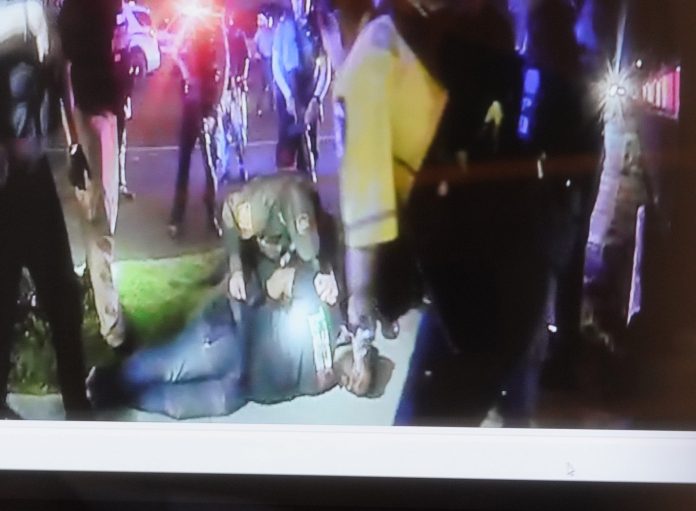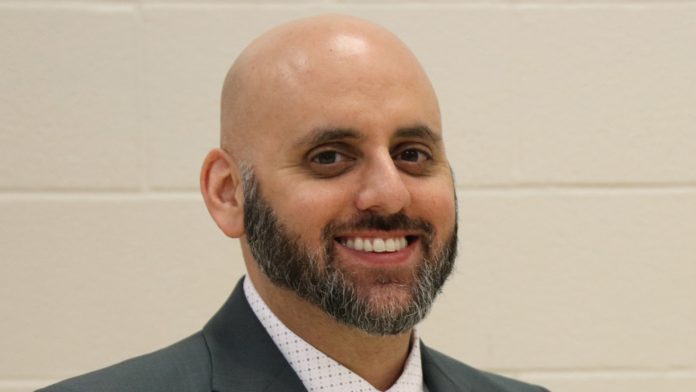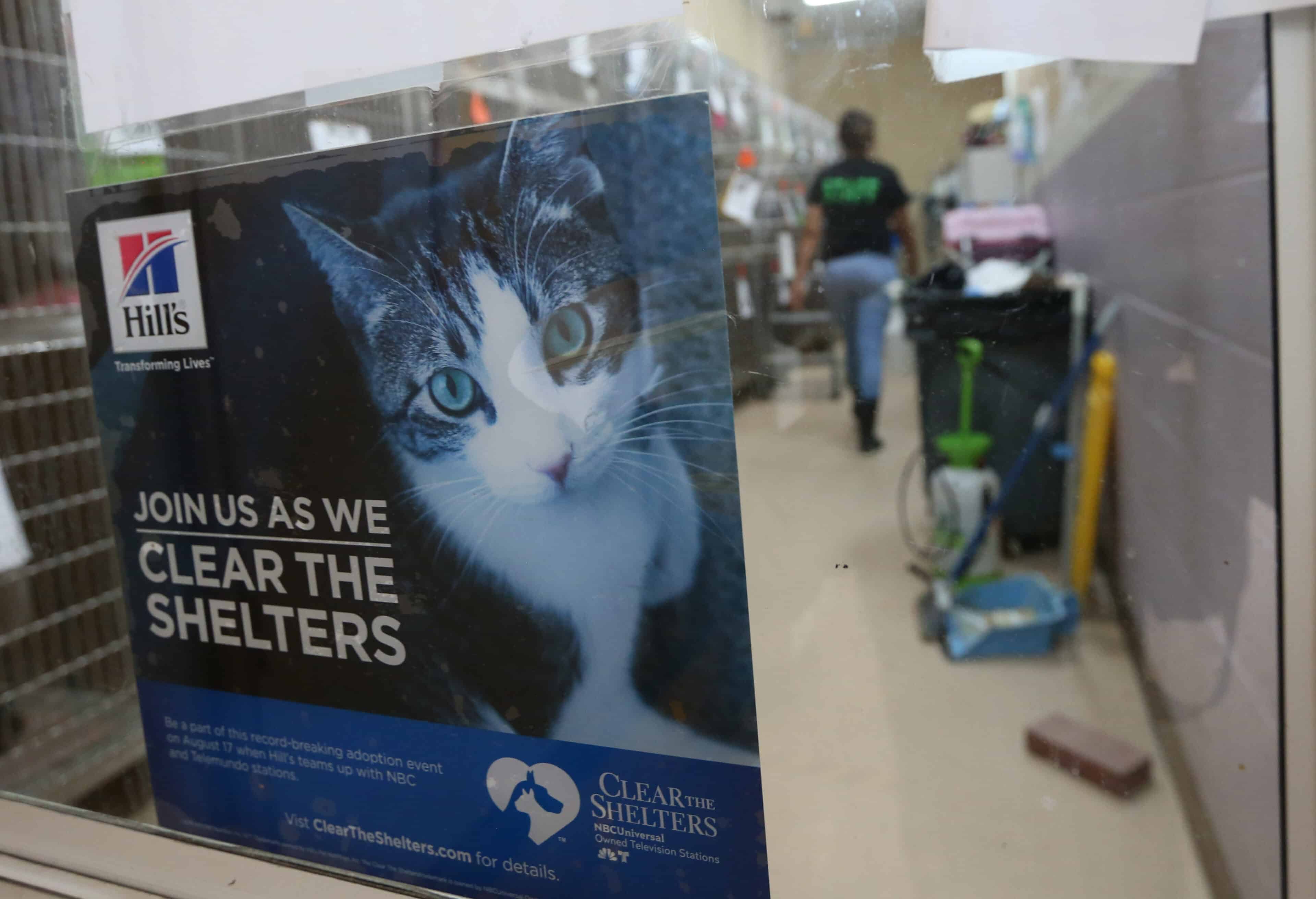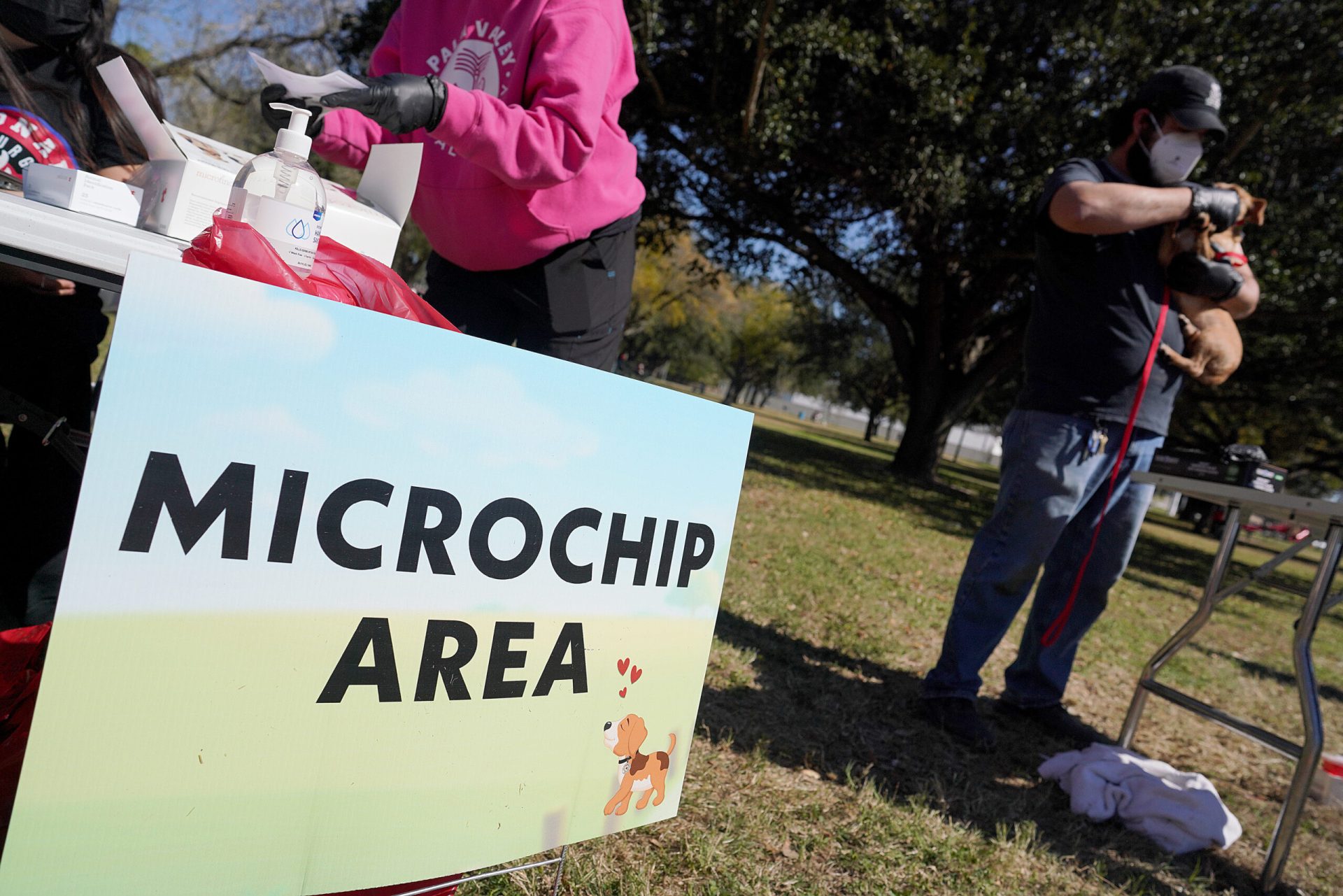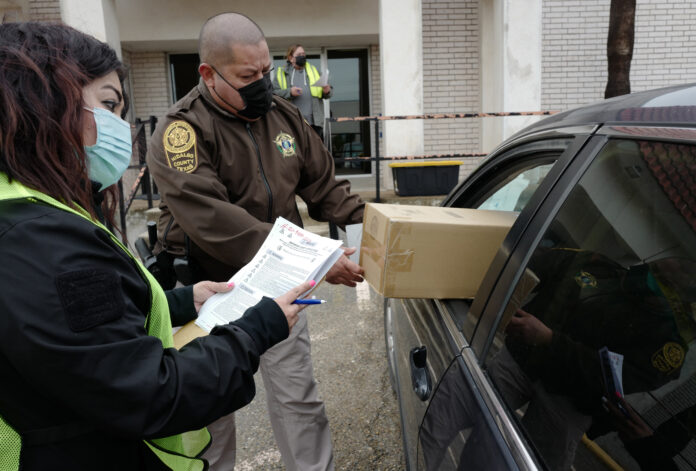Updated at 3:19 p.m.
By XAVIER ALVAREZ and FRANCISCO E. JIMENEZ | Staff Writers

EDINBURG — Multiple former and current law enforcement officers testified Friday morning regarding the events that occurred before and after the apprehension of the suspect who allegedly shot 49-year-old trooper Moises Sanchez, who died months later in Houston following a surgery, in 2019.
That suspect, 28-year-old Victor Alejandro Godinez, was asking other state troopers if the one he shot was OK during the ambulance ride to McAllen Medical hospital.
Godinez has been charged with one count of capital murder of a peace officer and two counts of attempted capital murder of a peace officer after shooting Sanchez and exchanging gunfire with two Edinburg police officers.
If he’s convicted, prosecutors will seek the death penalty.
Border Patrol agent Steve Chase testified how he volunteered to help in the manhunt for Godinez on April 7, 2019, as he was driving home northbound on 10th Street early that morning.
As he was on standby with his partner, Chase said he saw a man jump a fence on Mon Mack Road and began heading northeast describing him as “walking with a gait” almost as if he was injured or disabled.
Chase assumed he had been struck during an exchange of gunfire with law enforcement, which was proved to be true after he and his partner caught up to Godinez who laid on a sidewalk.
Along with Chase, Investigator Minnette Carmona, who was a McAllen police officer at the time, provided Godinez with medical assistance as he was bleeding from his right side upper body.
There’s conflicting testimony regarding the injury Godinez sustained and whether it was a gunshot wound or a graze.
Carmona testified that Godinez told her to let him die, that he killed one of their own and asked why she was helping. She said she reassured him that she was there to help and wouldn’t allow him to bleed out.

It was here that Godinez first asked if Sanchez was OK after he shot him, though no one answered him.
Jurors then saw body cam footage from state trooper Juan Zuniga and former trooper Evan Holguin who were tasked to escort Godinez with paramedics in the ambulance heading to McAllen Medical.
Godinez could be heard whooping and talking to the paramedics, complimenting one’s tattoo.
During the ride, Godinez once again asked about Sanchez.
“Hey, is that trooper alright?” Godinez asked. “I don’t remember. Yes, no, maybe?”
Carmona testified that she smelled alcohol on Godinez despite the overwhelming stench of blood on his person. Holguin stated that Godinez’s speech had sounded slurred, but he couldn’t confirm whether he was intoxicated as he didn’t conduct a field sobriety test on him.
Testimony on Thursday afternoon was highlighted by body camera footage and first hand accounts from law enforcement agents who arrested the man accused of shooting Texas Department of Public Safety Trooper Moises Sanchez in 2019.
Prosecutors called Eugenio Garcia, a livestock inspector for the Texas Animal Health Commission. He was working as a DPS patrol officer on April 6, 2019, the night that Sanchez was shot.
Garcia recalled arriving at the scene of the shooting and helping in the manhunt for Godinez. At approximately 12:30 a.m., he was told to take a few minutes to recuperate. He recalled sitting in his DPS unit with the windows rolled down, hoping that the fresh air would help calm his nerves.
He said that he checked the computer in his vehicle to see if there had been any updates in the search for Godinez, and had just poured himself a cup of coffee when he heard gunshots nearby.
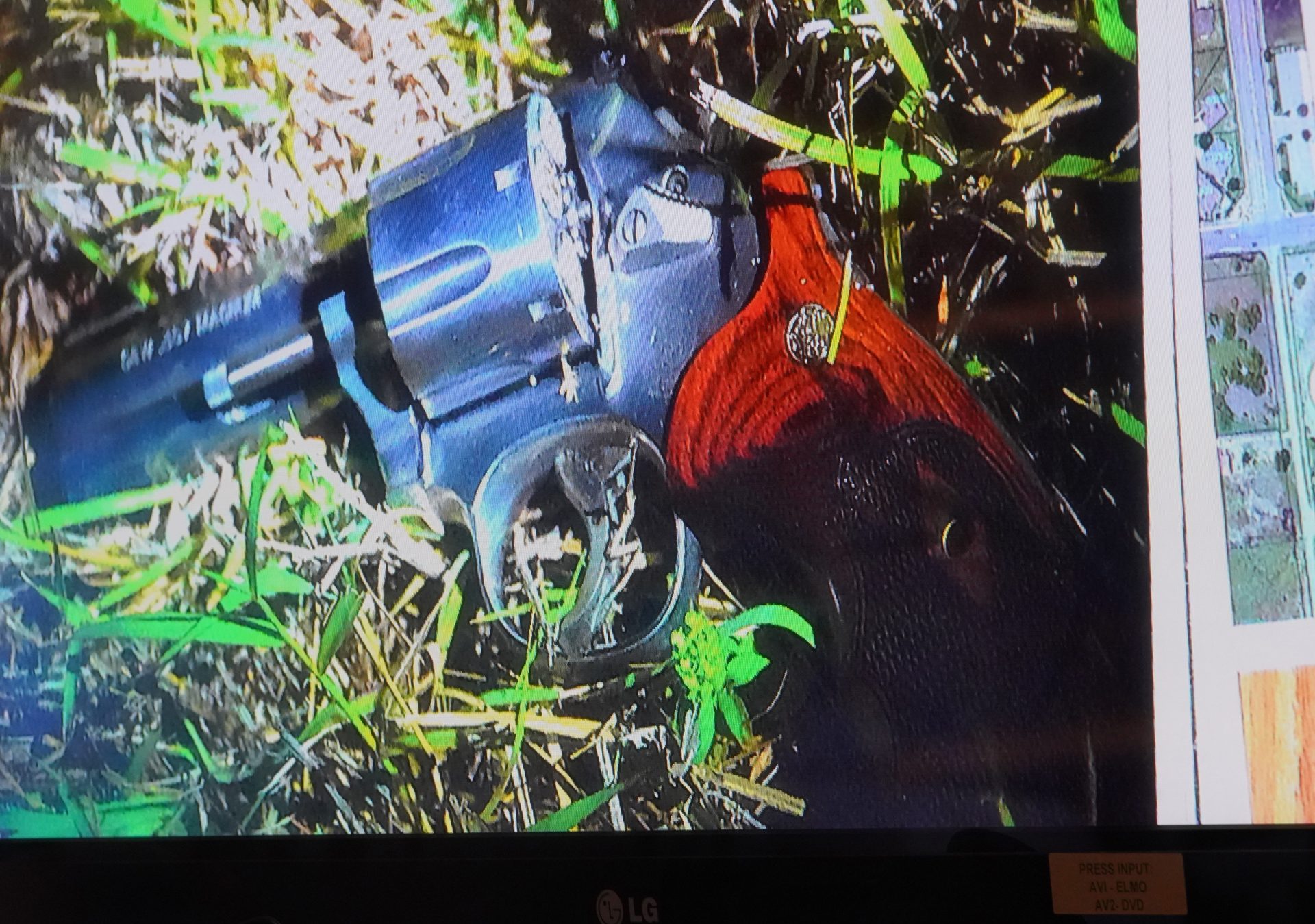
Prosecutors presented dash camera footage from Garcia’s vehicle to the court which showed him racing toward Mon Mack Road in Edinburg. He was then seen approaching an individual walking on the sidewalk on Mon Mack Road, which is a stone’s throw from where the shooting involving two Edinburg police investigators had just taken place.
The video showed him driving on Mon Mack Road and encountering an individual walking on the sidewalk.
“It’s 12:30 at night. There’s nobody on the road except police,” Garcia recalled. “I said, ‘Stop!’ I was expecting to get shot at. I was expecting the worst in that scenario.”
Prosecutors also showed Garcia’s body camera footage, which was an hour long and only had a few minutes with audio. Seen briefly in the footage was ATF Special Agent Eduardo Ramirez, who is a K9 handler and was on scene with two other agents and his K9, Bo.
Ramirez was also called to testify on his experience from that evening. He and Bo had been searing the area trying to locate a firearm or any bullet casings. He recalled hearing an exchange of gunfire directly south of his location.
He recalled heading to Mon Mack Road and going south on the west side of the road. At that moment, he saw the suspect walking towards him. He said that he did not know who he was, but since he was worried about getting into a “blue on blue” situation, he identified himself as a police officer.
Ramirez said that the suspect did not acknowledge him. He instead began crossing the street and walking away from him. Ramirez said that he did not run and did not appear to be anxious, but he did notice that his clothes were soiled and he was not wearing any shoes. He also did not notice a weapon.
“Get on the ground! Stop!” he recalled saying. The suspect still did not comply and began walking at a faster pace.
As he continued to follow the suspect, two DPS unit’s including Garcia’s pulled up. As they approached the suspect, he went down to his knees on the sidewalk. He was put into a prone position, and Ramirez placed him in handcuffs.
Ramirez said that the suspect was not violent. He did a pat-down search of the suspect, but did not find a weapon.
Garcia recalled the radio chatter saying, “Victor, 28, hit.” The suspect responded saying “I’m Victor. I’m hit.”
The trial is set to continue Tuesday morning.
Editor’s note: This story and its headline were updated to include developments from the fifth day of trial.
PREVIOUS COVERAGE:
Witness describes second shooting in Edinburg man’s trial over trooper’s killing

